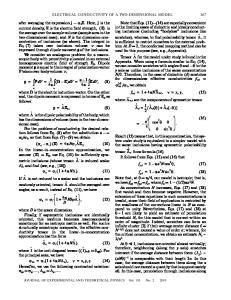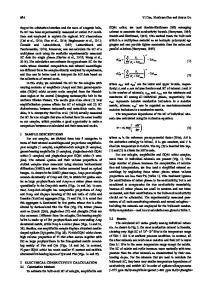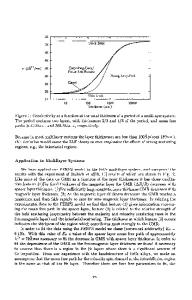A model for the electrical conductivity of peak-aged and overaged Al-Zn-Mg-Cu alloys
- PDF / 3,160,178 Bytes
- 13 Pages / 612 x 792 pts (letter) Page_size
- 93 Downloads / 418 Views
I. INTRODUCTION A. Aims and Scope Yield strength, toughness, and stress-corrosion cracking (SCC) resistance are the three major properties of heattreatable high-strength 7xxx aluminum alloys (Al-Zn-Mg– based), when used in upper-wing aircraft structures.[1-5] While the SCC resistance is relatively difficult to quantitatively assess, the electrical conductivity, however, can be used as a measure of the SCC resistance. The SCC resistance has been found to increase with increasing electrical conductivity in 7xxx-series alloys, particularly from the near-peak-aged (T6) to the overaged (T73) condition.[6,7,8] Consequently, the study of the electrical conductivity of 7xxx alloys has been of key interest to industrial manufacturers as well as material scientists, with an aim to predict and improve the stresscorrosion performance. Several models, or elements of models, of the dependence of the conductivity of Al-based alloys on composition and heat treatment have been reported.[9–13] For instance, a general description of the thermodynamics of the Al alloy system and the kinetics of phase precipitation (based on JMAK kinetics[14]) was given by Bratland et al.[9] A model that predicts conductivity as a function of the microstructure was proposed by Guyot and Cottignies.[10] This model considered the conductivity increase on overaging due to the reduction in electron scattering resulting from the coarsening of precipitates at a constant volume fraction, and the model was applied to one 7xxx alloy. In contrast, Dorward[11] proposed a model that considered the conductivity increase on overM. J. STARINK, Reader, is with the Materials Research Group, School of Engineering Sciences, University of Southampton, Southampton SO17 1BJ, United Kingdom. Contact e-mail: [email protected] X.M. LI, formerly Ph.D. Student, Materials Research Group, School of Engineering Sciences, University of Southampton, is Research Fellow with the Department of Dental Materials Science, King’s College London, London SE1 9RT, United Kingdom. Manuscript submitted April 2, 2002. METALLURGICAL AND MATERIALS TRANSACTIONS A
aging due to the reduction in the amount of dissolved atoms resulting from the coarsening of precipitates, and the model was applied to one 7xxx alloy (a 7050 alloy) for three aging temperatures. Femminella et al.[12,13] used adaptive numerical (AN) approaches to model the electrical conductivity of nine 7xxx alloys. The results showed that with AN modeling approaches, the electrical conductivity could be modeled very well. The latter article is the first publication describing modeling of conductivity in a multitude of alloys. For modeling the conductivity of 7xxx alloys to be possible in terms of physical and metallurgical principles, the microstructure of this kind of alloy needs to be analyzed. For instance, the grain and subgrain structure, the precipitation sequences, precipitate-free zones (PFZs), as well as intermetallic particles of the alloys, need to be characterized. In the present article, a detailed model for the electr
Data Loading...











